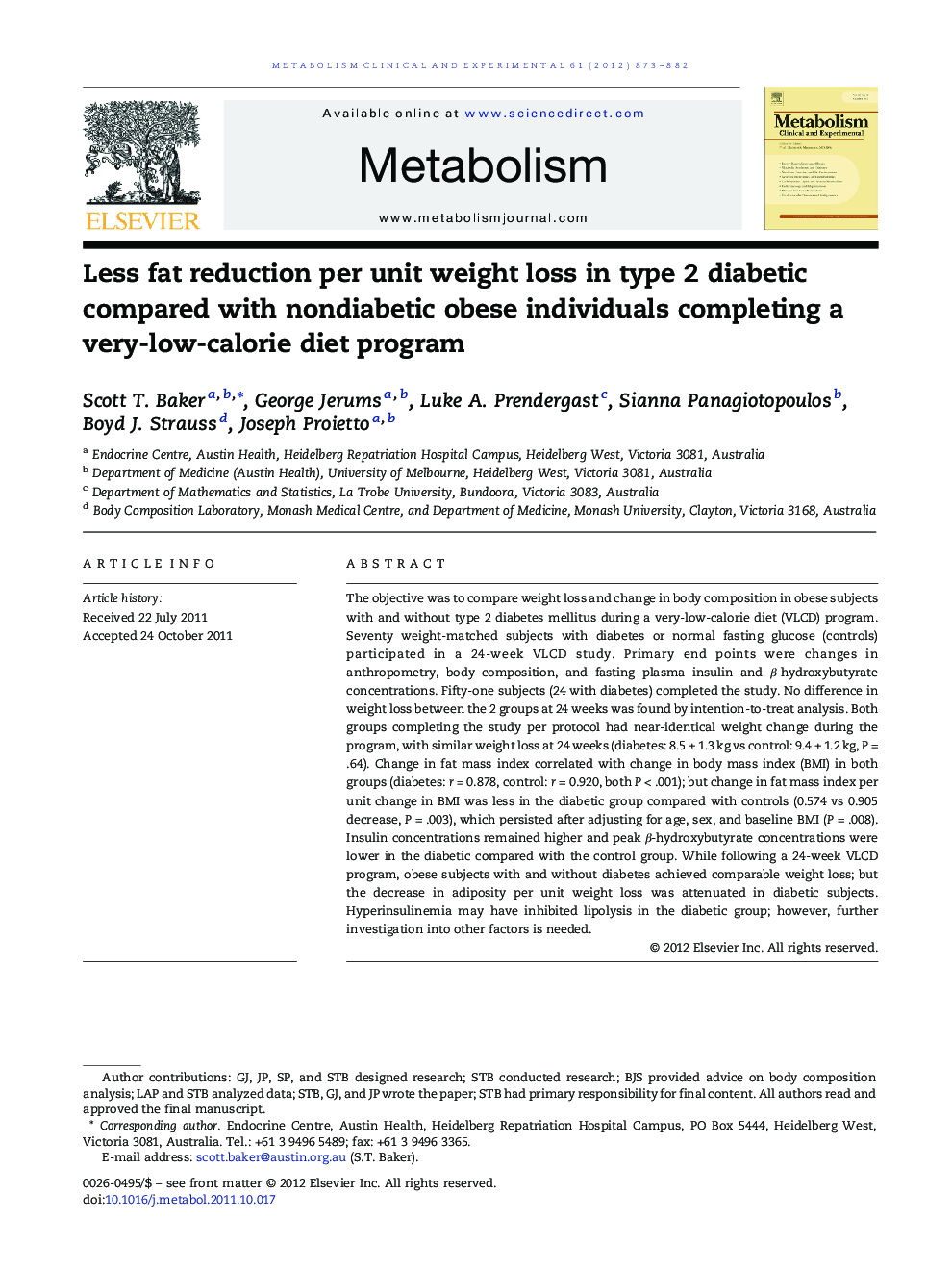| Article ID | Journal | Published Year | Pages | File Type |
|---|---|---|---|---|
| 2805899 | Metabolism | 2012 | 10 Pages |
Abstract
The objective was to compare weight loss and change in body composition in obese subjects with and without type 2 diabetes mellitus during a very-low-calorie diet (VLCD) program. Seventy weight-matched subjects with diabetes or normal fasting glucose (controls) participated in a 24-week VLCD study. Primary end points were changes in anthropometry, body composition, and fasting plasma insulin and β-hydroxybutyrate concentrations. Fifty-one subjects (24 with diabetes) completed the study. No difference in weight loss between the 2 groups at 24 weeks was found by intention-to-treat analysis. Both groups completing the study per protocol had near-identical weight change during the program, with similar weight loss at 24 weeks (diabetes: 8.5 ± 1.3 kg vs control: 9.4 ± 1.2 kg, P = .64). Change in fat mass index correlated with change in body mass index (BMI) in both groups (diabetes: r = 0.878, control: r = 0.920, both P < .001); but change in fat mass index per unit change in BMI was less in the diabetic group compared with controls (0.574 vs 0.905 decrease, P = .003), which persisted after adjusting for age, sex, and baseline BMI (P = .008). Insulin concentrations remained higher and peak β-hydroxybutyrate concentrations were lower in the diabetic compared with the control group. While following a 24-week VLCD program, obese subjects with and without diabetes achieved comparable weight loss; but the decrease in adiposity per unit weight loss was attenuated in diabetic subjects. Hyperinsulinemia may have inhibited lipolysis in the diabetic group; however, further investigation into other factors is needed.
Related Topics
Life Sciences
Biochemistry, Genetics and Molecular Biology
Endocrinology
Authors
Scott T. Baker, George Jerums, Luke A. Prendergast, Sianna Panagiotopoulos, Boyd J. Strauss, Joseph Proietto,
